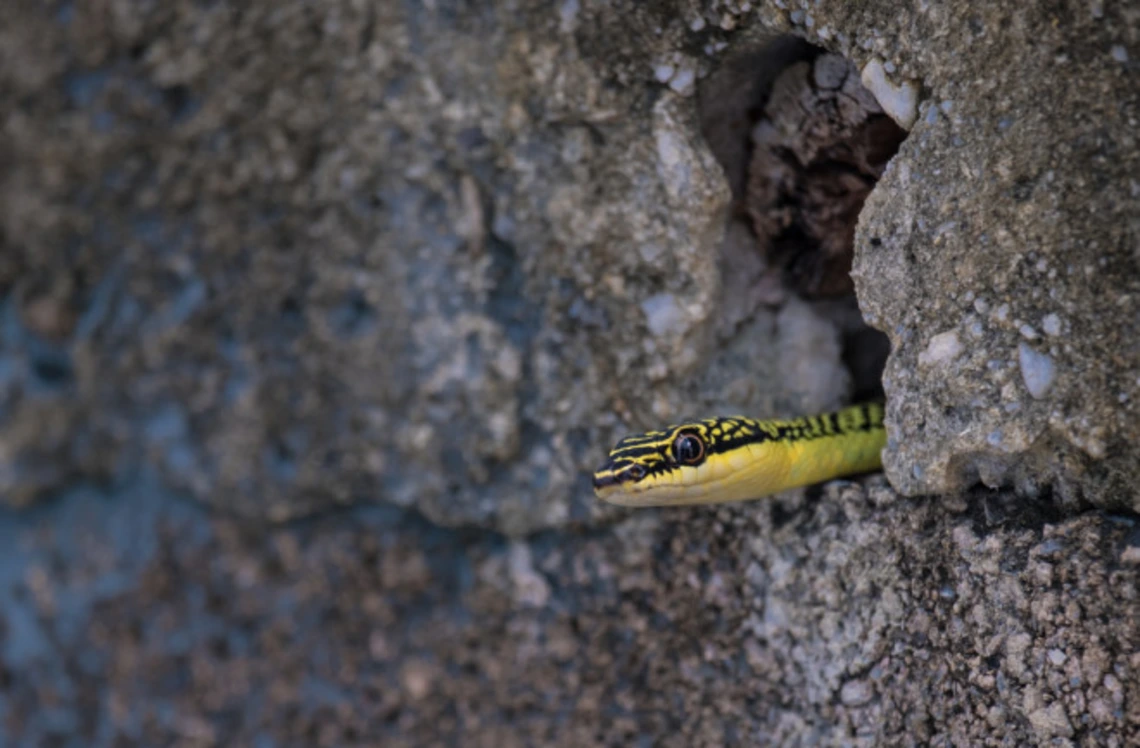Why and Where Snakes Hibernate
When the temperature drops, snakes must go into hibernation – or brumation. Learn why and how these creatures survive the cold.

A snake coming out of a hibernation den.
(Credit: Attapol Yiemsiriwut/Shutterstock)
Snakes are cold-blooded animals, or ectothermic, because they get their temperature from their surroundings and cannot generate their own body heat. While this can come in handy, the downside of being a cold-blooded animal is the struggle to survive in cold environments. Incidentally, if the outside temperature rapidly drops, their physical temperature can drop to temperatures that are life-threatening, too.
Species that live in habitats where winter months are inhospitable stay safe in the form of hibernation. Although reptilian hibernation is different from mammal hibernation on a physiological level — in fact, it is often referred to by scientists with the term “brumation,” instead — it follows almost all the same principles: If it’s too cold to prey and mate, you need to rest.
“Why waste energy? If you're not able to feed and you're not mating, you might as well take advantage of the fact that you're an ectotherm and that you can get really cold and still survive,” says Matt Goode, an assistant research scientist at the University of Arizona School of Natural Resources and the Environment.
